 |
| May 09, 2017 | Volume 13 Issue 18 |
Designfax weekly eMagazine
Archives
Partners
Manufacturing Center
Product Spotlight
Modern Applications News
Metalworking Ideas For
Today's Job Shops
Tooling and Production
Strategies for large
metalworking plants
FAA issues study on drone/human collision hazards
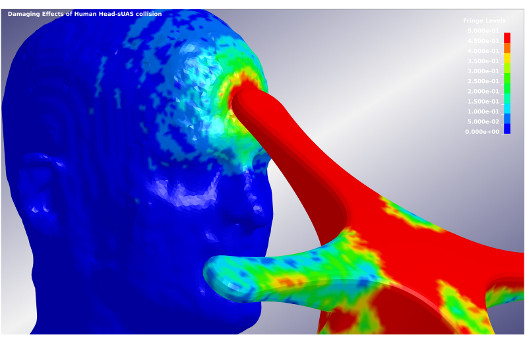
This computational simulation of an unmanned aircraft system (UAS) impacting the human head was developed by Mississippi State researchers using the university's High Performance Computing Collaboratory's supercomputers. The color contours represent von Mises shear stress as the UAS impacts with the forehead of the human head model.
What might happen if a drone hits a person on the ground? What's the risk of serious injury?
Although the Federal Aviation Administration (FAA) can't yet definitively answer those questions, studies by a consortium of leading universities have made a start toward better understanding the risks of allowing small unmanned aircraft -- or drones -- to fly over people.
The consortium that conducted the research includes the University of Alabama-Huntsville, Embry-Riddle Aeronautical University, Mississippi State University, and the University of Kansas through the Alliance for System Safety of UAS through Research Excellence (ASSURE). ASSURE represents 23 of the world's leading research institutions and 100 leading industry and government partners. It began the research in September 2015.
The research team reviewed techniques used to assess blunt force trauma, penetration injuries, and lacerations -- the most significant threats to people on the ground. The team classified collision severity by identifying hazardous drone features, such as unprotected rotors.
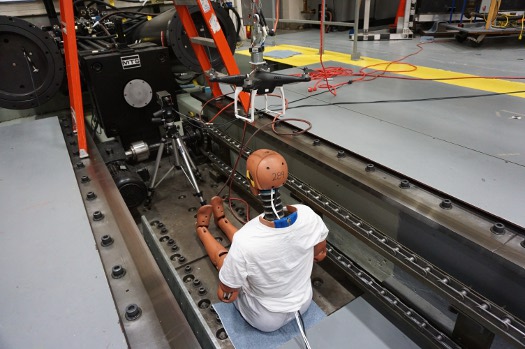
Researchers develop a dummy simulation involving a UAS crash with a human.
The fundamental question researchers were trying to answer was, "How big of a UAS can we fly directly over a person, and, if it does fall and hit someone, what is the risk of a serious injury?"
The Mississippi State researchers used quantifiable injury metrics -- including Abbreviated Injury Standard (AIS), Gadd Severity Index (GI), and Head Impact Criterion (HIC) -- to define safe and unsafe zones.
"It's essential to understand what happens when a UAS hits a person in order to develop safer designs and materials that lower injury risk and severity should a collision occur," said Raj Prabhu, the lead investigator for the Mississippi State team and an assistant professor in the Department of Agricultural and Biological Engineering.
"We developed and validated human head-UAS computer models to determine the thresholds and severity levels for traumatic brain injury for different injury scenarios," Prabhu said.
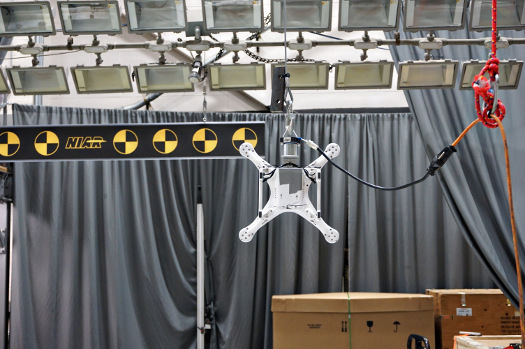
Researchers from UAH study structural load with UAS.
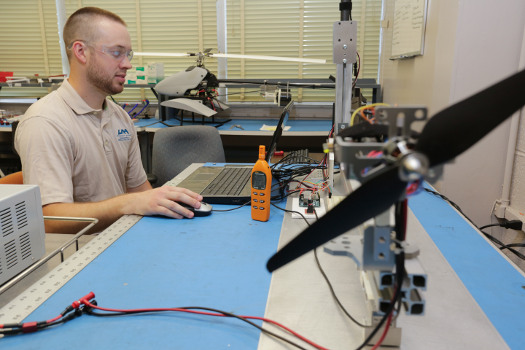
Rotorcraft Systems Engineering and Simulation Center. [Michael Mercier/UAH].
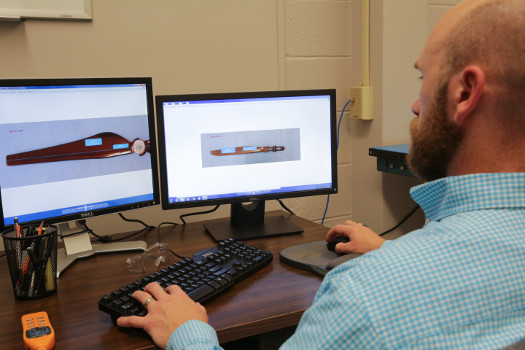
More testing at the simulation center. [Michael Mercier/UAH].
The group also reviewed more than 300 publications from the automotive industry and consumer battery market, as well as toy standards and the Association for Unmanned Vehicle Systems International (AUVSI) database. Finally, the team conducted crash tests, dynamic modeling, and analyses related to kinetic energy, energy transfer, and crash dynamics.
When the studies were complete, personnel from NASA, the Department of Defense, FAA chief scientists, and other subject matter experts conducted a strenuous peer review of the findings.
The studies identified three dominant injury types applicable to small drones:
- Blunt force trauma -- the most significant contributor to fatalities;
- Lacerations -- blade guards required for flight over people; and
- Penetration injuries -- difficult to apply consistently as a standard.
The research showed multi-rotor drones fall more slowly than the same mass of metal due to higher drag on the drone. Unlike most drones, wood and metal debris do not deform -- they transfer most of their energy to whatever they hit. Also, the lithium batteries that power many small drones need a unique standard to ensure safety.
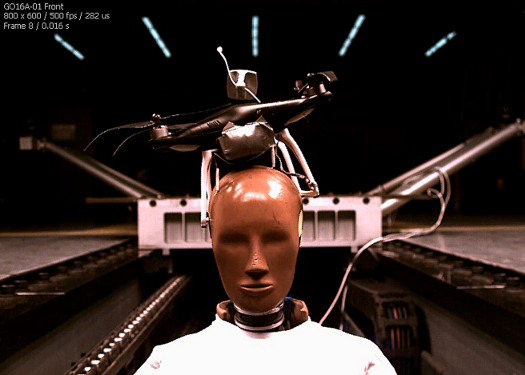
Front frame visual of UAS crash test shows representation of human head collision.
The team recommended continued research to refine the metrics developed. The team members suggested developing a simplified test method to characterize potential injury, and validating a proposed standard and models using potential injury severity test data.
The second phase of ASSURE's research is set to begin in June 2017 and will examine the risks of collisions with aircraft (see related Designfax article "Engineering researchers simulate what happens when a drone strikes a commercial jet turbofan)."
The report on the ASSURE research and two video files are available here.
Sources: Mississippi State, FAA, Alliance for System Safety of UAS through Research Excellence (ASSURE)
Published May 2017
Rate this article
View our terms of use and privacy policy
